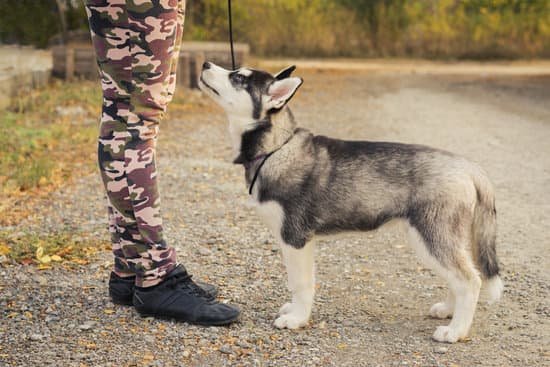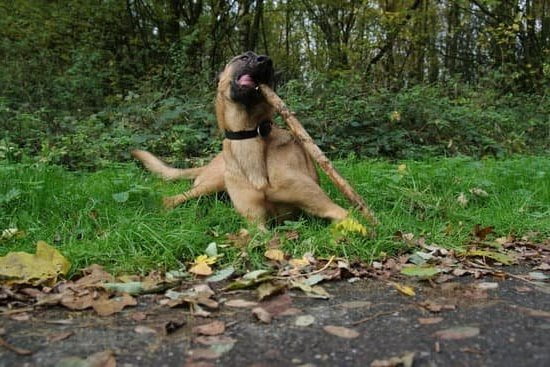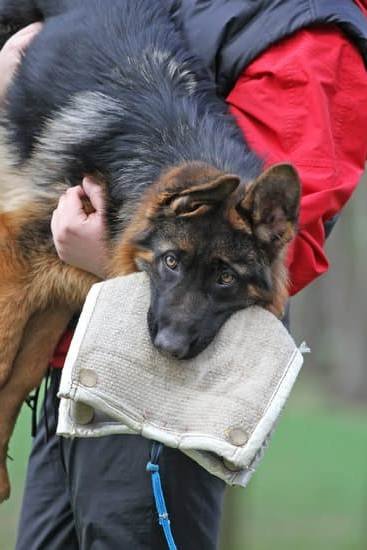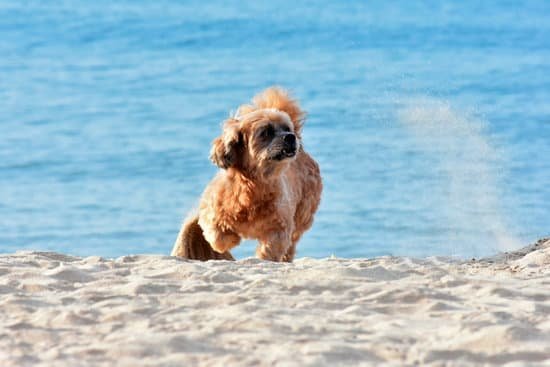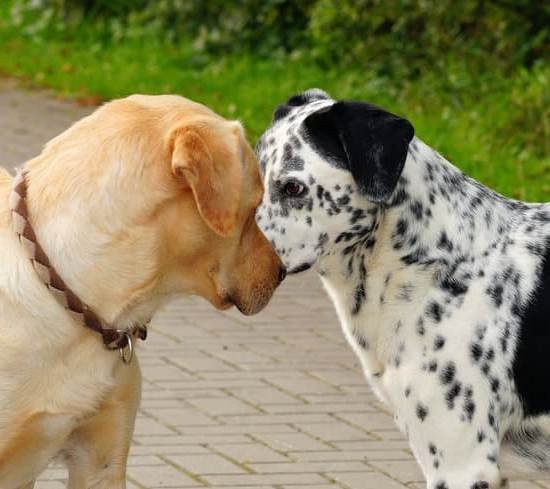Is your dog displaying signs of food aggression? This behavior can be concerning for any pet owner, but there are ways to address and manage it. In this article, we will explore the causes of food aggression in dogs, how to recognize the signs, and the importance of addressing this issue.
We will also discuss basic and advanced training techniques, as well as creating a positive feeding environment for your dog. Additionally, we will provide tips for maintaining a food-aggression-free household with your furry friend.
Food aggression in dogs can be a challenging behavior to deal with, but understanding the root cause is crucial in addressing and managing it effectively. By recognizing the signs and understanding why this behavior occurs, pet owners can take proactive steps to prevent or minimize food aggression in their dogs. Addressing food aggression not only creates a safer environment for both the dog and its owners, but also fosters a healthier relationship between them.
In this section, we will delve into the various aspects of food aggression in dogs, providing valuable insights into why it happens and how to identify if your dog is exhibiting such behavior. With an understanding of food aggression, pet owners can take the necessary steps to create a harmonious feeding environment for their beloved canine companions.
Recognizing the Signs of Food Aggression in Your Dog
Food aggression in dogs can manifest in a variety of ways, and it is important for dog owners to recognize the signs in order to address the issue effectively. Some common signs of food aggression in dogs include growling or snarling when approached while eating, showing teeth or snapping at anyone who comes near their food, and guarding their food bowl or treats.
Other signs may include stiff body language, raised fur along the back, and an overall tense demeanor during feeding time.
It is essential to understand that food aggression in dogs is not necessarily about being “dominant” or “bad-tempered,” but rather a natural behavior that stems from survival instincts. Dogs with a history of food scarcity or competition for resources are more likely to develop this behavior. It can also be learned through reinforcement – if a dog has been allowed to exhibit aggressive behavior around food without consequences.
Recognizing these signs early on can help prevent the behavior from escalating and becoming a safety concern for both the dog and the people around them. By understanding the signs of food aggression, dog owners can take proactive measures to address this issue through training and management techniques.
Some effective ways to train your dog out of food aggression include:
- Gradually desensitizing your dog to having people near their food bowl during mealtime
- Using positive reinforcement techniques such as rewarding calm behavior around food
- Teaching the “leave it” command to encourage self-control around food items
By understanding and recognizing the signs of food aggression in dogs, pet owners can take steps towards addressing this issue and creating a safe feeding environment for their furry companions.
Causes of Food Aggression in Dogs
Food aggression in dogs can be triggered by various underlying causes, and understanding these reasons is crucial in addressing and managing this behavior.
Lack of Socialization
One common cause of food aggression in dogs is the lack of socialization during their early developmental stages. Dogs that have not been exposed to a variety of people, animals, and environments may develop anxiety and fear around food, leading to defensive behaviors when eating.
Resource Guarding
Some dogs exhibit food aggression as a result of resource guarding, which is a natural instinct to protect valuable resources such as food, toys, or territory. This behavior can stem from a dog’s survival instincts and the need to ensure access to resources for themselves.
Previous Negative Experiences
Dogs that have had negative experiences around food in the past may develop food aggression as a response to those experiences. This could include instances of competition for food with other animals or humans, or even instances of being deprived of food.
Understanding these causes can help dog owners implement appropriate training techniques and interventions to address their dog’s food aggression. By taking proactive steps to address the root causes, owners can help their dogs feel more secure and comfortable around mealtimes.
Techniques such as desensitization, counter-conditioning, and positive reinforcement can all play a role in addressing these underlying causes and modifying the dog’s behavior. If you want to know more about how to train your dog out of food aggression seek professional help for tailored guidance on how best to approach training your specific dog based on its unique behaviors and triggers.
Importance of Addressing Food Aggression in Dogs
Food aggression in dogs can pose serious risks to both the dog and its owners, making it crucial for pet owners to address this behavioral issue. Failure to properly train a dog out of food aggression can lead to dangerous situations, including biting and other aggressive behavior. Additionally, food aggression can cause stress and anxiety for both the dog and its human family members, ultimately deteriorating the bond between them.
Understanding the Consequences of Ignoring Food Aggression
Ignoring food aggression in dogs may result in increased protective behavior over their food, creating a hostile feeding environment that is detrimental to the overall well-being of the dog. This behavior can also affect other animals or humans in the household, leading to potential conflicts and even injuries. Moreover, if left unaddressed, food aggression may escalate over time, making it more challenging to correct.
Preventing Negative Consequences With Proper Training
It is important for pet owners to understand that addressing food aggression in dogs is key not only for their safety but also for the overall happiness and harmony within the household. By implementing effective training techniques and strategies, pet owners can teach their dogs how to behave appropriately during feeding time and reduce or eliminate their food aggression.
Learning how to train your dog out of food aggression can ultimately lead to a healthier relationship between pets and their owners while preventing potentially dangerous situations.
Basic Training Techniques to Prevent Food Aggression
Training your dog out of food aggression is a crucial part of responsible pet ownership. By understanding the underlying causes of food aggression and recognizing the signs, you can take proactive steps to prevent this behavior from developing in your dog. Here are some basic training techniques to prevent food aggression:
- Establish a routine: Dogs thrive on routine, so establishing a consistent feeding schedule can help minimize anxiety around meal times. Feed your dog at the same time each day and in the same location.
- Practice hand-feeding: Hand-feeding your dog allows you to create positive associations with human interaction during meal times. Start by offering your dog small amounts of food from your hand, gradually increasing the amount over time.
- Teach impulse control: Training your dog to wait for permission before eating can help prevent impulsive behavior around food. Use commands such as “wait” or “leave it” before allowing your dog to eat their meals.
By implementing these basic training techniques, you can begin to address and prevent food aggression in your dog. Consistency, patience, and positive reinforcement are key components in successfully retraining this behavior.
Remember that every dog is unique, so it may take time and effort to see progress. If you are struggling with training or if your dog’s food aggression is severe, don’t hesitate to seek professional help from a certified dog trainer or behavior specialist who has experience in addressing food aggression issues.
Advanced Training Methods to Manage and Overcome Food Aggression
Once you have a good understanding of food aggression in dogs and have recognized the signs in your own pet, it’s important to address the issue through proper training methods. Here are some advanced training techniques that can help you manage and overcome food aggression in your dog.
One effective method is desensitization, which involves gradually exposing your dog to the triggers that cause food aggression while rewarding calm behavior. For example, you can start by standing near your dog while they eat, then gradually moving closer over time. This helps your dog learn that there is no threat to their food and reduces their need to be aggressive.
Another useful technique is counter-conditioning, which involves changing your dog’s emotional response to the situation that triggers food aggression. You can do this by pairing the presence of a person or another animal with something positive, such as treats or toys. This helps your dog associate the trigger with something enjoyable rather than a reason to be aggressive.
Finally, seeking help from a professional dog trainer or behaviorist may be necessary for severe cases of food aggression. These experts can assess the situation and provide personalized training plans tailored to your dog’s specific needs. They can also offer guidance on how to safely manage meal times and create a positive feeding environment for your pet.
Overall, using these advanced training methods in combination with basic techniques can help you effectively manage and overcome food aggression in your dog, leading to a happier and healthier relationship between you and your pet.
| Training Technique | Description |
|---|---|
| Desensitization | Gradually exposing the dog to triggers while rewarding calm behavior |
| Counter-conditioning | Changing the dog’s emotional response by pairing triggers with something positive |
| Professional Help | Seeking assistance from a trainer or behaviorist for severe cases of food aggression |
Creating a Positive Feeding Environment for Your Dog
Another key aspect of creating a positive feeding environment is to minimize potential triggers for food aggression. This means ensuring that other pets or young children are kept away from your dog while they are eating. It’s also important to avoid disturbing your dog while they are eating, as this can lead to heightened anxiety and potential aggression.
It’s also beneficial to incorporate positive reinforcement during feeding time. You can do this by praising your dog for calm and non-aggressive behavior around their food bowl. This helps create a positive association with meal times and reinforces good behavior. Additionally, incorporating interactive feeders or puzzle toys can provide mental stimulation and prevent your dog from feeling overly protective of their food.
In addition to these strategies, it’s crucial to monitor your dog’s body language during meal times and be mindful of any signs of food aggression. By creating a positive feeding environment for your dog, you can help prevent and address food aggression while ensuring that meal times are stress-free for both you and your furry friend.
By actively applying these techniques, you will find how to train your dog out of food aggression in an efficient manner, promoting an overall peaceful living environment for everyone at home.
Seeking Professional Help for Severe Cases of Food Aggression
Professional help for severe cases of food aggression in dogs is essential when basic training techniques and advanced methods have not been successful in managing or overcoming the issue. In some cases, food aggression can be deeply ingrained in a dog’s behavior and may require the expertise of a professional dog trainer or behaviorist.
One option for seeking professional help is to enroll your dog in a behavior modification program specifically designed to address food aggression. These programs are typically conducted by certified animal behaviorists who have specialized knowledge and experience in dealing with aggressive behaviors in dogs. They will work closely with you and your dog to develop a tailored training plan that aims to modify your dog’s aggressive behavior around food.
Another option is to seek the assistance of a qualified dog trainer who has experience in dealing with food aggression. A professional dog trainer can assess your dog’s behavior, identify triggers for food aggression, and develop a customized training program that focuses on positive reinforcement techniques to change your dog’s response to feeding time.
It is important to note that seeking professional help for severe cases of food aggression not only benefits your dog but also ensures the safety of everyone in the household. With expert guidance and support, you can effectively address this challenging behavior and create a harmonious environment for both you and your beloved canine companion.
| Professional Help Options | Description |
|---|---|
| Behavior Modification Program | Enroll your dog in a program led by certified animal behaviorists. |
| Qualified Dog Trainer | Seek assistance from a professional trainer experienced in addressing food aggression. |
Tips for Maintaining a Food-Aggression-Free Household With Your Dog
In conclusion, addressing and managing food aggression in dogs is essential for maintaining a safe and harmonious household environment. By understanding the signs and causes of food aggression, dog owners can take proactive measures to prevent and overcome this behavior in their pets.
Basic training techniques such as teaching patience and impulse control, as well as advanced methods like desensitization and counterconditioning, can be effective in addressing food aggression. Creating a positive feeding environment through consistent routines and positive reinforcement can also help shape your dog’s behavior around mealtime.
It is important for dog owners to seek professional help for severe cases of food aggression, as professional trainers or behaviorists have the expertise to assess the situation and provide tailored strategies for managing the behavior. Additionally, maintaining a food-aggression-free household requires ongoing effort from the owner, including implementing consistent training practices, respecting the dog’s space during meals, and avoiding situations that may trigger aggressive behavior.
By taking these steps and being mindful of your dog’s needs, you can create a peaceful coexistence with your pet while enjoying mealtimes together.
Frequently Asked Questions
How Do You Break a Dog From Food Aggression?
Food aggression in dogs can be challenging to deal with, but it’s important to start by addressing the underlying issues causing this behavior. One way to break a dog from food aggression is by desensitizing them to food and teaching them impulse control through positive reinforcement training.
Can Dogs Be Trained Out of Food Aggression?
Yes, dogs can be trained out of food aggression with consistent and patient training. It’s essential to work with a professional trainer who can help assess the situation and develop a customized training plan for your dog. Training should focus on building trust, teaching self-control, and modifying their behavior around food.
Does Food Aggression in Dogs Go Away?
Food aggression in dogs can diminish or go away with proper training, management, and behavioral modification techniques. However, it may not completely disappear in all cases, especially if the behavior is deeply ingrained or has been present for a long time. It’s crucial for owners to remain vigilant and continue reinforcing good behavior even after initial improvement.

Welcome to the blog! I am a professional dog trainer and have been working with dogs for many years. In this blog, I will be discussing various topics related to dog training, including tips, tricks, and advice. I hope you find this information helpful and informative. Thanks for reading!

